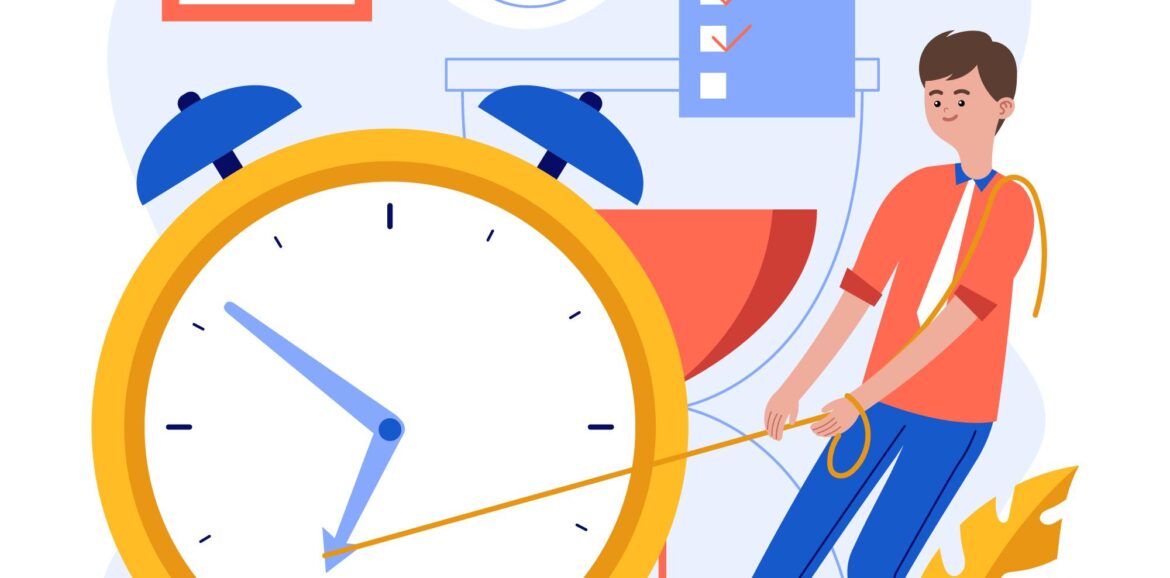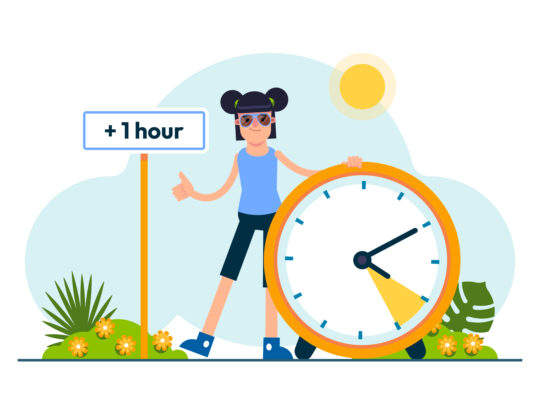| Finding Your Time Management Style | ||
| Instructor: Dave Crenshaw | ||
| Released: 4/19/2022 | Course Details 1h14m General | |
| Skills Covered Time Management | Course Link | |
| Professional Certifications and Continuing Education Units (CEUs) Project Management Institute – PDUs: 1 hour National Association of State Boards of Accountancy (NASABA) – CPE: 2.4 | ||
| When it comes to time management strategies, one size does not fit all. To create your optimal workday, you must consider many factors, including the nature of your job, the level of interaction you have with others, and your personal preferences. In this course, productivity expert Dave Crenshaw expands upon the concepts covered in his other time management courses to help you boost your productivity by crafting a personalized approach to time management. Dave takes you through an assessment to discover your time management style and then shows how to adapt fundamental time management strategies to suit your unique needs. Plus, discover how to work productively with coworkers whose time management style differs from yours. Learning objectives – Modify your time management system to suit your style. – Use the variety-consistency assessment to discover your time management style. – Adapt your time management system to suit the needs of your team. – Show coworkers how to discover their time management style. – Evaluate your language to collaborate more effectively. Source: LinkedIN Learning | ||
| You May Enjoy! David Crenshaw recommends you complete the “Time Management Fundamentals” training before taking “Finding Your Time Management Style”. |
Discovering Your Style
What is a time management style?
Time management styles are not personality tests. Dave Crenshaw has identified 10 distinct time management styles and each person has some combination of two or so of these styles in their day. Your style is a result of the intersection of two things. First, your desire for variety versus consistency and second, how you define victory or success at the end of each day.
Understand the variety-consistency
After conducting a survey of people across a variety of different socioeconomic backgrounds, Dave found that people are almost evenly divided within the variety and consistency scale. One half preferred variety in their workday, and the other half wanted to keep things steady and straightforward.
This represents the first variable of your time management style.
Take the variety-consistency assessment
Use the exercise file to answer two sets of questions by answering A or B to determine your time management style.
Understand your daily victory
Recognize your victories. Each person defines success differently. Determine your definition of success.
Take the daily victory assessment
Use the exercise file to answer questions by selecting the 1st and 2nd choice for each question. This is not a personality assessment. Answer with your immediate response.
Compile your assessment results
We are going to use the results from the “Terms of Victory Assessment” and the “Variety-Consistency Score” to locate your most likely primary and secondary style.
How to use the next sections
Chapter 2 has 10 videos which break down into two videos for each of the variety styles. Chapter 3 also has 10 videos which break down into two videos for each of the consistency styles.
Adapting Your Time Management Style’
- Gathering – putting unresolved items into gathering points
- Processing – deciding what, when, and where for each item
- Doing – getting the job done
Variety-Based Styles
Solver: Style overview
| Style | Schedule | Relationship | |
| Focuses on resolving issue and troubleshooting Like a network engineer or mechanics Tools are a mix of digital and physical | Flexible Create a schedule on solving technical or mechanical issues | Need debate and discussion-driven leadership | |
Solver: Time management adaptations
| Gathering | Processing | Doing |
| Use effective mobile gathering points and homes | Pay special attention to When and Where. When – Make sure you are not scheduling things back-to-back Where – rolling toolbox and organize folders | Avoid taking too long to solve one issue. Set generous time expectations. |
Schedule buffer time. Give yourself 3-5 minutes after you’re done working with someone to make some notes, gather anything that you need to do in an approved gathering point and then jump back into the next appointment.
Innovator: Style overview
| Style | Schedule | Relationship | |
| Focused on creativity and variety. Like inventors or industrial designers. Tools are everything – free form. | Plan for open days Think and create in new and diverse environments. | Seek accountability and ask for occasional check-ins. | |
Innovator: Time management adaptations
| Gathering | Processing | Doing |
| Be creative – writing ideas on whiteboards or diction. Make time for gathering. | “What” is the most important step. Schedule “waiting for…” reminders When – schedule open space of time to think | Beware of losing track of time. Having an assistant could be very helpful. Reminder system can also be beneficial. |
Innovator’s can be messy in the creative process. Go around and take 20-30 minutes to find anything that’s out of place and put it into an approved gathering point.
Launcher: Style overview
| Style | Schedule | Relationship | |
| Focused on initiation or beginning of new projects and ventures. Like for-profit and nonprofit entrepreneurs. Tools including drawing and converting them to digital later. | Benefit from long stretches of uninterrupted focus. Schedule time on calendar. | Need support and require consistent accountability. Occasional dose of tough love required. | |
Launcher: Time management adaptations
| Gathering | Processing | Doing |
| Capture ideas quickly. Create easy gathering points. (Evernote or OneNote) | Schedule just the first minute of activity. Find opportunities to say no. | Schedule time to think. Double deadlines. Beware of creating overambitious deadlines. |
Persuader: Style overview
| Style | Schedule | Relationship | |
| Focuses on inspiring and motivating others to take action. Like sales and public speaking positions. Tools are diverse but they are personally well-versed in body language | Plan around high-traffic times. | Benefit from personal and friendly accountability. | |
Persuader: Time management adaptations
| Gathering | Processing | Doing |
| Use verbal methods to gather. Make use of quick text and/or audio notes. | Plan around high-traffic times. Use a Customer Relationship Management (CRM) system. | Schedule appointments with yourself. Reminder system. |
Responder: Style overview
| Style | Schedule | Relationship | |
| Focus on rescuing others and being ready at a moment’s notice. Like medical professionals or tech support. Tools vary to the need being fulfilled. | Schedule time off. | Benefit from supportive and adaptable accountability. | |
Responder: Time management adaptations
| Gathering | Processing | Doing |
| Use periods of downtime to gather. Include the ideas in your head. | Allow time for interruptions. Leave at least 50% of each day unscheduled. | Place items in homes that allow for quick retrieval. |
Consistency-Based Styles
Analyzer: Style overview
| Style | Schedule | Relationship | |
| Focus on discovering the correct answers through data analysis and study. Like accountants and data analysts. Tools revolve around data, software, spreadsheets, books and other sources. | Establish a pattern schedule with little room for interruptions. | Benefit from mentors with an academic or data-driven background. | |
Analyzer: Time management adaptations
| Gathering | Processing | Doing |
| Establish 8-10 gathering points. Separating home vs. work. | Consider multiple steps when processing a task. Prefer more detailed filing methods. Avoid too much categorizing. | Avoid delaying decisions in pursuit of perfection. Focus on making incremental decisions. |
Maker: Style overview
| Style | Schedule | Relationship | |
| Focus on creating many projects in a patterned way. Like craftsmen and artisans. Tools are anything that promotes the use of the five senses. | Benefit from structured work times. | Benefit from peer-minded accountability. | |
Maker: Time management adaptations
| Gathering | Processing | Doing |
| Keep it simple. Should try to reduce gathering points to 4. Prefer physical experience like notepad. | Double the duration of scheduled appointments. Use many homes for the variety of tools. | Schedule extra reminders so they don’t get absorb into an appointment and miss the next. |
Doer: Style overview
| Style | Schedule | Relationship | |
| Focus on completing many tasks through efficient effort. Like solo practitioners and administrative professionals. Tools depend on the work to be done. Typically revolve around software. | Benefit from a consistent schedule with a variety of demanding activities. | Need quick and easy accountability. | |
Doer: Time management adaptations
| Gathering | Processing | Doing |
| Combine work and home gathering points. Put gathering points in one central location. | Be willing to say no. Schedule task completion time of 1 hour to knock out as many tasks as possible. | Beware of impatience. Give advance warning before a task is due. |
Educator: Style overview
| Style | Schedule | Relationship | |
| Focus on helping others learn and improve their skills in a personal way. Like teachers, consultants and trainers. Tools of a wide variety like visual aids, books and instructional devices. | Benefit from a highly consistent schedule. | Find respected educators for mentoring. | |
Educator: Time management adaptations
| Gathering | Processing | Doing |
| Establish a system for pausing and taking notes. Pause 10 seconds and jot down ideas in a notepad. | Creating daily, weekly and monthly patterns. Reserve time for preparation and review. | Provide reminders in advance. |
Nurturer: Style overview
| Style | Schedule | Relationship | |
| Focus on attending to the needs of others. Like human resources or nursing. Specialized tools for repeated and consistent use. | Benefit from specific start and stop boundaries. | Look for nurturing mentorship. | |
Nurturer: Time management adaptations
| Gathering | Processing | Doing |
| Use a physical gathering point. Use a small notepad or app on your phone. Be patient with your organization. | Schedule extra time to avoid feeling rushed. | Add a statement about why this task helps others. |
Working with Differing Styles
How to help co-workers discover their style
To encourage co-workers to discover their style, ask them to complete the Time Management Style assessment. Emphasize learning about ourselves. If they are not willing to take the assessment, try completing the assessment on their behalf. You probably won’t be 100% right, but it will begin the process of starting to consider the unique needs and perspectives of your coworkers when it comes to getting work done.
Learn about the style of co-workers
What is the average workday like for this person? Make notes in two columns, with the header “Similarities” and “Differences”. Make notes of things you share in common and then make notes about things that are different. This is going to take a bit of time. While it may be time consuming you will find that it’s actually time saving as it will result in identifying conflicting styles.
2% Principle
2% productivity improvement results in one free work week.
How to harmonize with differing styles
We want to respect that someone else is going to operate in a different way and not change ourselves or ask them to change but find a way to meet in the middle.
Connect the task with how it will help others. Build stronger relationships.
 | Remember! To experience the full benefit of this guide, I highly recommend you watch the full training session. |






